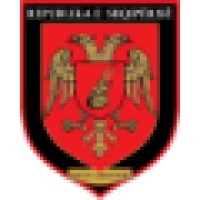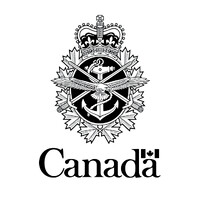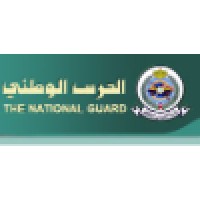
Albanian Armed Forces Company Cyber Security Posture
gs.mil.alThe Albanian Armed Forces (AAF) (Albanian: Forcat e Armatosura të Republikës së Shqipërisë (FARSH)) were formed after the declaration of independence in 1912. Today it consists of: the General Staff, the Albanian Land Force, the Albanian Air Force and the Albanian Naval Force. According to the Albanian Constitution, the Albanian Armed Forces are charged to: Protect the territorial integrity of the country. Always be present in areas incurring menace. Assist the population in case of natural and industrial disasters and warn the dangers of military and non military nature. Protect the constitutional order as it is determined by law. Participate in international operations in composition of multinational forces.
AAF Company Details
albanian-armed-forces
10,001+ employees
0
928
Armed Forces
gs.mil.al
Scan still pending
ALB_9391933
In-progress
Between 800 and 900
This score is AI-generated and less favored by cyber insurers, who prefer the TPRM score.
 AAF Global Score
AAF Global Score.png)

Albanian Armed Forces Company Scoring based on AI Models
| Model Name | Date | Description | Current Score Difference | Score |
|---|---|---|---|---|
| AVERAGE-Industry | 03-12-2025 | This score represents the average cybersecurity rating of companies already scanned within the same industry. It provides a benchmark to compare an individual company's security posture against its industry peers. | N/A | Between 800 and 900 |
Albanian Armed Forces Company Cyber Security News & History
| Entity | Type | Severity | Impact | Seen | Url ID | Details | View |
|---|
Albanian Armed Forces Company Subsidiaries

The Albanian Armed Forces (AAF) (Albanian: Forcat e Armatosura të Republikës së Shqipërisë (FARSH)) were formed after the declaration of independence in 1912. Today it consists of: the General Staff, the Albanian Land Force, the Albanian Air Force and the Albanian Naval Force. According to the Albanian Constitution, the Albanian Armed Forces are charged to: Protect the territorial integrity of the country. Always be present in areas incurring menace. Assist the population in case of natural and industrial disasters and warn the dangers of military and non military nature. Protect the constitutional order as it is determined by law. Participate in international operations in composition of multinational forces.
Access Data Using Our API

Get company history
.png)
AAF Cyber Security News
U.S. Embassy Advances Albanian Armed Forces’ Cyber Defense Capability
Used in concert, these two cyber defense weapon systems significantly bolster Albania's ability to defend its digital sovereignty and provide ...
Iowa Wing Joins International Cyber Defense Competition
The event brought together high school and college students from around the Midwest, including some who serve in the Iowa Air National Guard. “I ...
Minnesota National Guard, Croatia partner during international cyber exercise
The two-week cyber security training event included approximately 60 representatives from Albania, Bosnia & Herzegovina, Croatia, Kosovo, Montenegro, Slovenia, ...
Balkan Power Play: Kosovo, Albania, and Croatia Form New Military Alliance
Kosovo, Albania, and Croatia have officially announced the formation of a new military alliance, marking a pivotal moment for regional security.
What will a new defence pact in southeast Europe mean for the region?
The military deal signed by Albania, Croatia and Kosovo has angered Serbia at a time of growing concern over defence capabilities across the continent.
Iran Using Fake 'Dream Job' Offers in Cyber Attacks on US Allies
State-linked hackers are distributing malware to victims, which, once downloaded, will allow the attackers to access their systems.
Leading Air Force Cyber Security Service Providers in Air Defence
Airforce Technology has listed some of the leading companies offering products and services related to cybersecurity defence solutions, based on ...
“Committed Partners in Cyberspace”: Following cyberattack, US conducts first defensive Hunt Operation in Albania
A team of cyber operators from the US Cyber National Mission Force (CNMF) conducted their first-ever defensive cyber operation there.
Serbia, Hungary deepen defence, energy ties
The defence pact expands years of deepening political and economic cooperation between Hungary and Serbia under Hungarian Prime Minister Viktor ...

AAF Similar Companies

U.S. Navy Reserve
MISSION Throughout all 50 states and around the world, the Navy Reserve force delivers real-world capabilities and expertise to support the Navy mission — building a more lethal, warfighting culture focused on great power competition. VISION The Navy Reserve provides essential naval warfighting c

Canadian Armed Forces | Forces armées canadiennes
A career in the Canadian Armed Forces is more than a way to make a living. It’s a passport to a whole-life experience that will change you and allow you to change the lives of others. Join an organization that offers more than 100 different trades and professions. Obtain world-class qualification

Air Force Space Command
Air Force Space Command, activated Sept. 1, 1982, is a major command with headquarters at Peterson Air Force Base, Colo. AFSPC provides military focused space and cyberspace capabilities with a global perspective to the joint warfighting team. People More than 40,000 professionals assigned to 13

U.S. Air Force Reserve
The Air Force Reserve is an integral component of our Nation's air defense and military support network. Reservists bring knowledge, skills and expertise from their civilian experiences to support critical missions and training around the globe, while working alongside their Active Duty Air Force me

Canadian Armed Forces | Forces armées canadiennes
A career in the Canadian Armed Forces is more than a way to make a living. It’s a passport to a whole-life experience that will change you and allow you to change the lives of others. Join an organization that offers more than 100 different trades and professions. Obtain world-class qualification

SANG
Saudi Arabian National Guard المهمة الأساسية للحرس الوطني هي : الحفاظ على الأمن، والاستقرار الداخلي للوطن، والدفاع عن مقدّساته ومكتسباته الحضارية . ومن مـهامه الأخرى ما يلي: •حماية المنشآت الحيوية، والإستراتيجية التي يُكَلَّف بها. • المشاركة في

Frequently Asked Questions
Explore insights on cybersecurity incidents, risk posture, and Rankiteo's assessments.
AAF CyberSecurity History Information
How many cyber incidents has AAF faced?
Total Incidents: According to Rankiteo, AAF has faced 0 incidents in the past.
What types of cybersecurity incidents have occurred at AAF?
Incident Types: The types of cybersecurity incidents that have occurred include .
Incident Details
What are the most common types of attacks the company has faced?
Additional Questions
What Do We Measure?
















Every week, Rankiteo analyzes billions of signals to give organizations a sharper, faster view of emerging risks. With deeper, more actionable intelligence at their fingertips, security teams can outpace threat actors, respond instantly to Zero-Day attacks, and dramatically shrink their risk exposure window.
These are some of the factors we use to calculate the overall score:
Identify exposed access points, detect misconfigured SSL certificates, and uncover vulnerabilities across the network infrastructure.
Gain visibility into the software components used within an organization to detect vulnerabilities, manage risk, and ensure supply chain security.
Monitor and manage all IT assets and their configurations to ensure accurate, real-time visibility across the company's technology environment.
Leverage real-time insights on active threats, malware campaigns, and emerging vulnerabilities to proactively defend against evolving cyberattacks.




